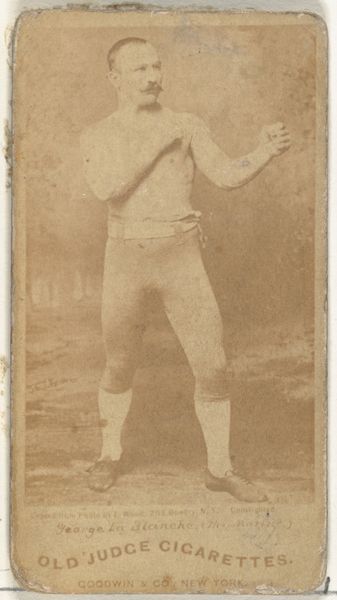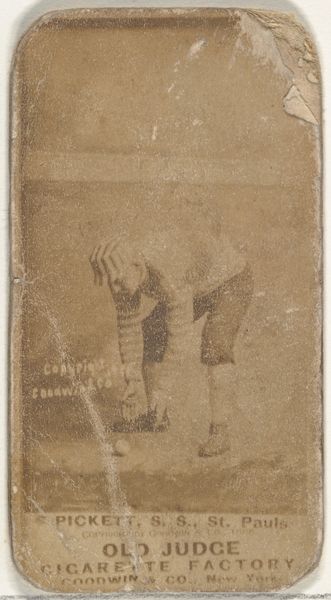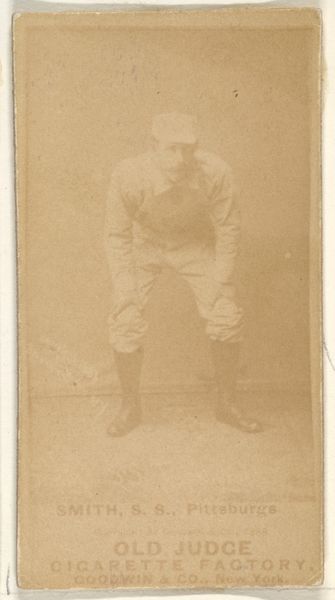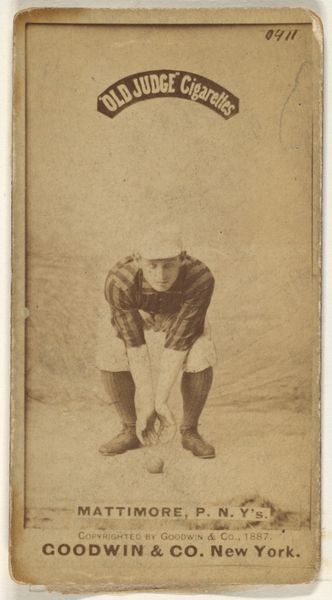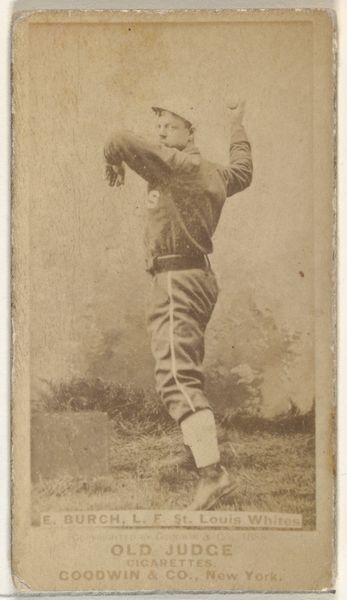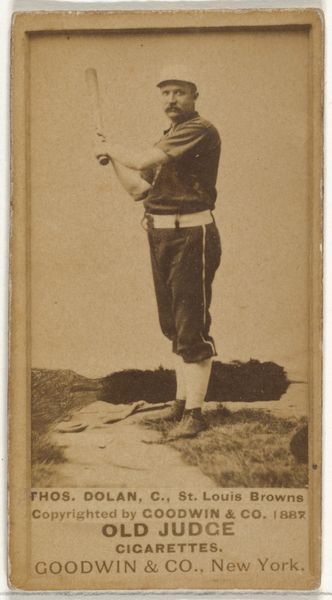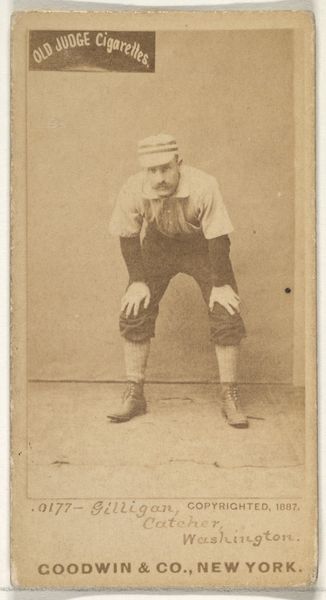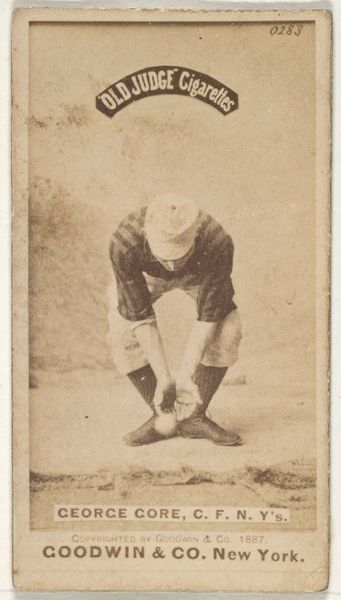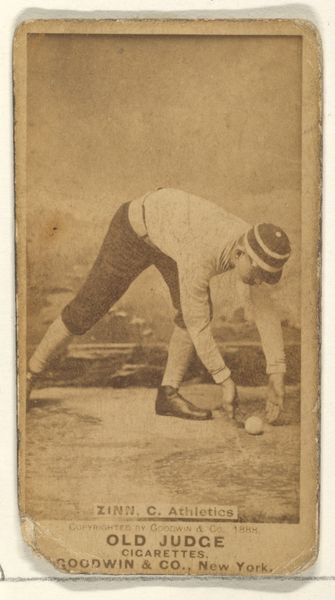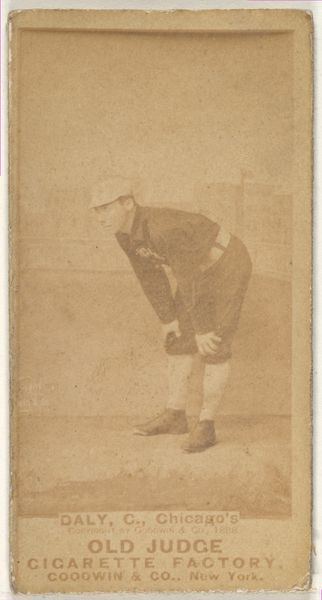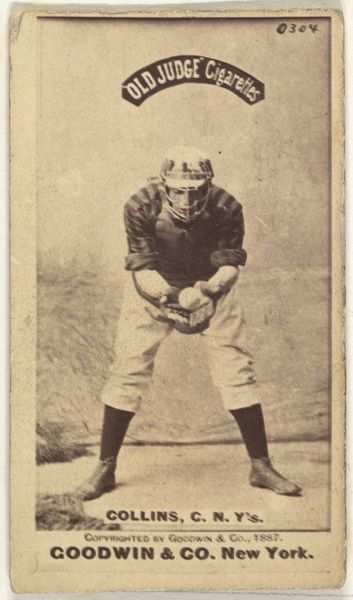
T.C. Nicholson, 2nd Base, Cleveland, from the Old Judge series (N172) for Old Judge Cigarettes 1887 - 1890
0:00
0:00
print, photography
#
portrait
# print
#
impressionism
#
baseball
#
photography
#
men
#
athlete
Dimensions: sheet: 2 11/16 x 1 3/8 in. (6.9 x 3.5 cm)
Copyright: Public Domain
Curator: What a curious little relic. This is a baseball card, part of the Old Judge series (N172), dating back to between 1887 and 1890. It features T.C. Nicholson, the second baseman for Cleveland. Goodwin & Company, the cigarette factory in New York, produced it. Editor: Oh, the sepia tone gives it such an ethereal, almost ghostly quality. You can barely make out the figure poised to field the ball. There’s something quite haunting and beautiful about it. Curator: Absolutely. These cards were distributed in cigarette packs as a marketing ploy. It’s a fascinating example of how commercialism infiltrated leisure and entertainment. Baseball was becoming increasingly popular, and tobacco companies like Goodwin were quick to capitalize on it. Editor: I see this quiet focus—all about being in that split second with that ball—and it speaks of something much larger than sport. It feels timeless; like watching ritual captured. Is it strange to find that in advertising? Curator: Not at all. The strategy behind inserting photographs of athletes in cigarette packs speaks volumes about the social values and marketing techniques of the late 19th century. Think about it – linking ideals of athleticism and virility with smoking! And the democratization of imagery through mass production reshaped the cult of celebrity and commodification of athletes. Editor: And in capturing this single action—he's like a coiled spring. What does he represent at that time—an emerging figure, a hero to be collected… to own? Curator: He’s both an advertisement and a representation of a shifting social landscape. The image becomes a collectible commodity representing the growing popularity of baseball and the burgeoning consumer culture. They became symbols of the era, encapsulating ideas about sports, celebrity, and national identity. Editor: Right. I suppose that tension makes it worth contemplating today. These things echo—the aspirations and, naturally, also the hidden agenda of earlier times. Curator: Precisely. It shows how intertwined art, commerce, and popular culture are, reminding us that even something as simple as a baseball card can tell complex stories about society. Editor: Stories within stories. What a thought to keep close when viewing this little ghostly print.
Comments
No comments
Be the first to comment and join the conversation on the ultimate creative platform.

